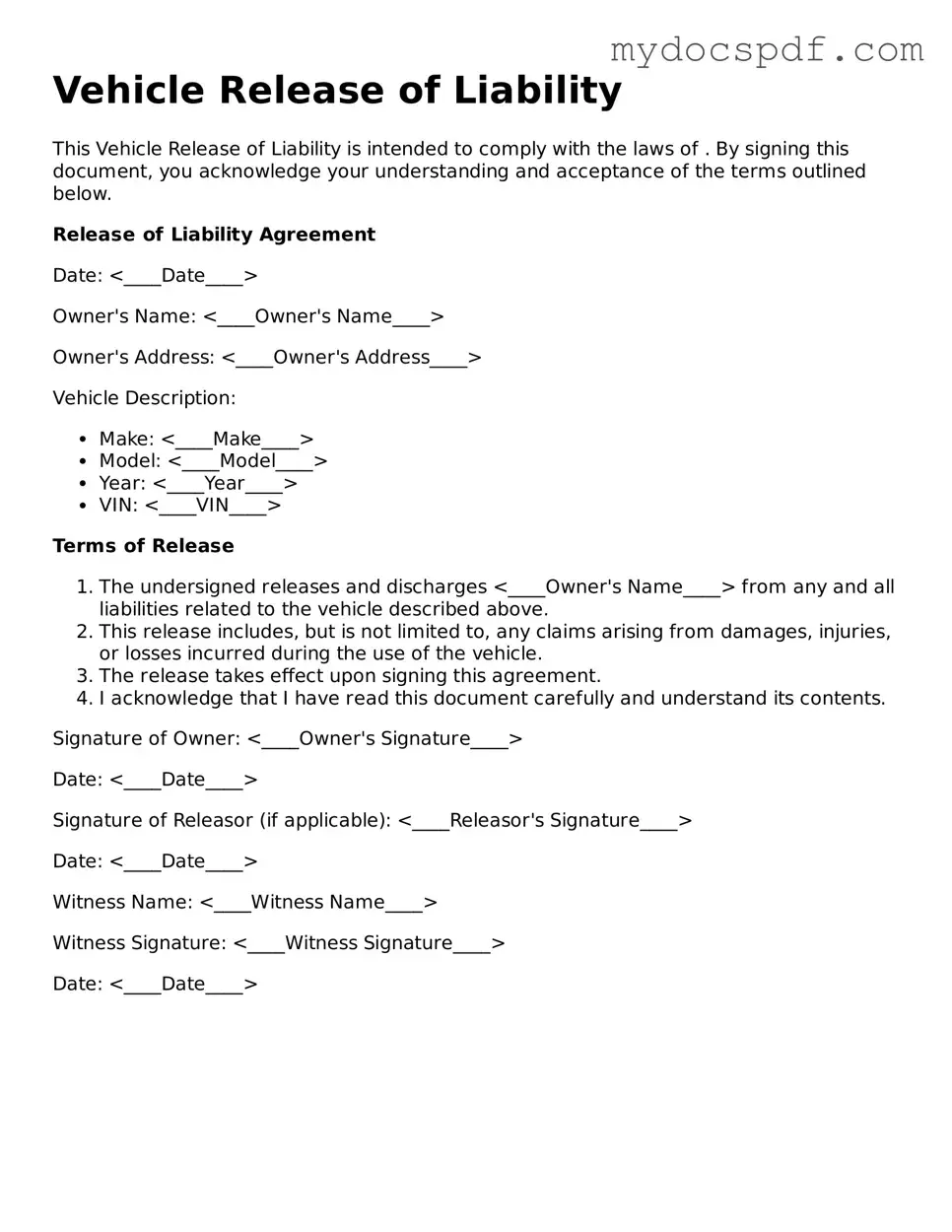Vehicle Release of Liability
This Vehicle Release of Liability is intended to comply with the laws of . By signing this document, you acknowledge your understanding and acceptance of the terms outlined below.
Release of Liability Agreement
Date: <____Date____>
Owner's Name: <____Owner's Name____>
Owner's Address: <____Owner's Address____>
Vehicle Description:
- Make: <____Make____>
- Model: <____Model____>
- Year: <____Year____>
- VIN: <____VIN____>
Terms of Release
- The undersigned releases and discharges <____Owner's Name____> from any and all liabilities related to the vehicle described above.
- This release includes, but is not limited to, any claims arising from damages, injuries, or losses incurred during the use of the vehicle.
- The release takes effect upon signing this agreement.
- I acknowledge that I have read this document carefully and understand its contents.
Signature of Owner: <____Owner's Signature____>
Date: <____Date____>
Signature of Releasor (if applicable): <____Releasor's Signature____>
Date: <____Date____>
Witness Name: <____Witness Name____>
Witness Signature: <____Witness Signature____>
Date: <____Date____>
